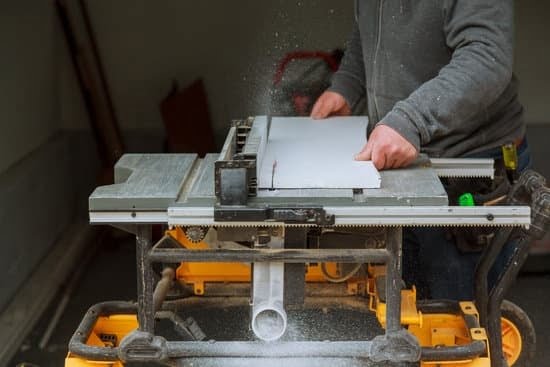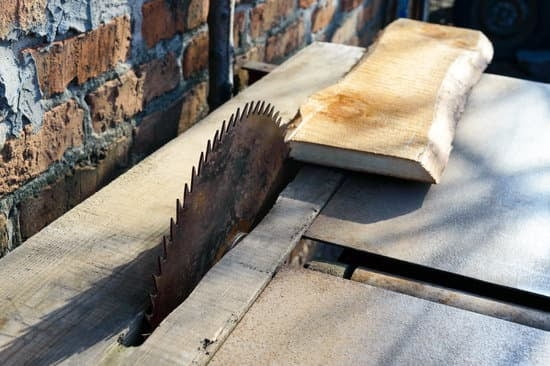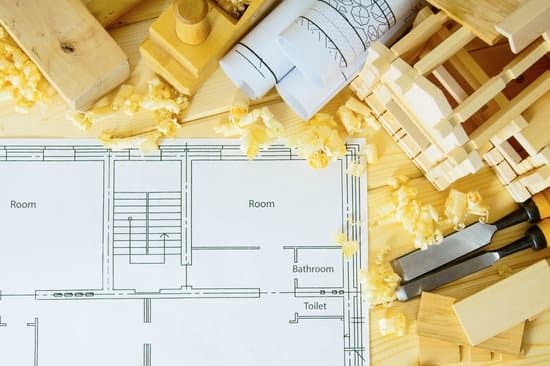Introduction
Wooden box woodworking is the craft of making wooden boxes. It has a long history, with some estimates dating it back over 6,000 years. Wood box making is an important part of ancient and modern cultures because of their versatile nature and the many applications they can have. Wooden boxes can be used for storage, jewelry boxes, planters, decorative pieces and more. There are all sorts of techniques used in wooden box woodworking, from simple hand-crafted models to intricate carvings and joinery. By using different types of wood and various finishes, artisans can create beautiful heirloom quality pieces to last a lifetime or become future antiques! With the right tools and knowledge anyone can partake in this timeless craft.
Types of Woods Used
Wooden box woodworking involves the craft of making various types of wooden boxes, crates and containers. The craft often requires precision, careful attention to detail and an understanding of the different woods typically used for this type of woodworking. The most popular woods utilized for making wooden boxes are oak, maple, cherry, walnut and mahogany. Each type of wood has its own unique characteristics that need to be taken into account when selecting the appropriate wood for a particular project.
When it comes to finishing techniques, there are many options available for adding a final touch to a finished product. Stains or varnishes can be applied to leave a distinct colour and lacquers or oils can provide protection against wear and tear. For antique-style look, antiquing techniques such as distressing, weathering or burnishing can give a rustic feel to the wooden box. Additionally, cutouts or applique can be added during the finishing process in order to create decorative touches that help separate one’s work from other pieces made in similar ways. Finally, sanding is an essential step prior to attaching hinges or other functional components which need tight satisfying seams that only detailed sanding can achieve.
Wood Selection Factors
When you are deciding on the wood for your wooden box woodworking project, there are several factors to consider before beginning. The type of wood that you choose is going to have a significant impact on the strength and stability of your box, so it is important to think about all the options available.
Firstly, you need to consider the grain of your wood. Different woods will have distinct characteristics with regard to their grain pattern which can affect both how strong the wood is and how attractive it looks in your finished product. If you plan on staining or painting your box then choosing grainy woods will help achieve an aesthetically pleasing result as they absorb paint more evenly than smoother looking woods. For strength purposes it is generally recommended that harder, denser woods be used because they will stand up better during construction and use.
The other factors important in selecting your desired wood include things like weight, cost, availability and sustainability. You’ll want to make sure that the wood you are using is appropriate for its purpose; lighter woods such as balsa may be good for decorative or prototyping purposes but should not be used for any heavy-duty applications due to their lack of durability. Additionally, cost can play a big role when it comes to choosing between real lumber and pressboard/plywood types. While cheaper materials may save in money initially they might not hold up as well over time if they lack natural strength or require more expensive support pieces during construction, so take this into account when deliberating which way would be best in terms of budgeting. Finally, availability and sustainability should always remain at the forefront of your decision-making; try to source locally whenever possible using responsibly produced materials so that you have no doubt as to their quality and origin.
Types of Wooden Boxes
Wooden boxes come in a variety of types, sizes, and styles for all sorts of purposes. Each type has its own unique characteristics that set it apart from other types. Here are some of the main categories:
1. Puzzle boxes are designed with a complex combination of moves or special steps needed to open, making them an excellent gift or home decor item. The intricacy can range from basic four-sided rectangles to more complicated designs involving multiple right angles and hidden compartments.
2. Keepsake boxes are used to store small items such as jewelry, cards, coins, or other trinkets. These come in a wide array of sizes ranging from tiny boxes that fit into one’s pocket to large ornate cases used as decorative pieces.
3. Jewelry boxes feature drawers and compartments that help keep pieces organized and easy to access. Many feature intricate carvings on the exterior which make them aesthetically pleasing and elegant.
4. Toolboxes are essential for anyone who does woodworking but also work great for carrying around office supplies and other small miscellaneous items. This type ranges in size from ones widely available at hardware stores to custom made cases tailored to specific user needs and preferences.
5. Display boxes are transparent cases with lids used primarily for storing photographs, artwork, or important documents such as diplomas or awards that need to be kept safe but still remain visible for viewing purposes when desired. The exterior is often crafted out of wood while the interior usually consists of glass or acrylic panels to protect the contents without hindering visibility of them at the same time
Safety in Wood Box Woodworking
Safety should be a priority when it comes to wooden box woodworking. All of the tools used in this activity must be inspected before use to help prevent accidents and injuries. Pencils, saws, hammers, and other tools must be stored in their respective places so that they will always be easily accessible in the case of an emergency. It is also important to understand safety regulations for woodworking operations such as not wearing loose clothing near machinery or working within reach of electrical cords. In addition, all sawdust must be cleaned up regularly and safety gloves and glasses should always be worn when interacting with power tools. Furthermore, any hazardous materials such as finishes should have adequate ventilation and caution labels attached to them at all times. The use of appropriate dust-collection systems is highly advised as it creates a healthier environment while reducing fire risk significantly. Following these rules can help ensure accidents, fires, and injuries are avoided while maximizing productivity through wooden box woodworking activities.
Inspiring Wood Box Projects
Wooden box woodworking is a wonderful craft for those who enjoy making something useful and beautiful out of natural materials. While it can take some skill, wooden box woodworking is an enjoyable and rewarding hobby that allows you to be creative in designing and building elaborate projects. From simple keepsake boxes to intricate jewelry boxes and from jewellery chests to unique home decor items, wooden boxes can be as simple or complicated as you make them.
Common tools used for wooden box woodworking include saws, chisels, mallets, sandpaper, planes, drills, clamps, mortise & tenon joinery tools, routers and dovetail jigs. Depending on the complexity of the project, many of these tools may need to be augmented with specialty tools such as a pocket hole jig or scroll saw. The types of woods that are commonly used in this type of crafting range from pine to oak to cherry and other hardwoods like mahogany or teak. Finishing techniques vary greatly but typically include staining/dyeing and a final sealant such as beeswax or lacquer.
Popular projects in wooden box woodworking include creating picture frames, jewellery boxes/chests, bread boards/trays/platters, display stands/cabinets/lanterns and potting benches among many more items; nearly anything you can imagine can be made into a wooden box! With enough patience and dedication anyone can begin exploring their options for pursuing this rewarding craft – no matter the end product! Whether starting with basic ideas found online or selecting plans from reputable retailers such as Rockler Woodworking & Hardware for more detailed instructions; attempting wooden box woodworking gives one much satisfaction knowing that something beautiful has been created from raw material combined with skillful execution.
Getting Started with Wood Box Woodworking
Wooden box woodworking is a great hobby to take up. It is relatively simple and takes minimal supplies to get started; however, it can be a bit intimidating due to the complex looking joints and finishes. The good news is that there are plenty of resources out there to help get beginners on their feet.
If you’re interested in wooden box woodworking, here are some essential tips and resources to help you get started:
1. Learn About the Different Types of Wood: Before starting your project, become familiar with the different types of wood available and the advantages of each type. This will make it easier for you to pick the right piece for your project, as well as ensure that you’re utilizing quality materials.
2. Read Up on Joinery Techniques: Joinery techniques are used to connect two or more workpieces in an attractive manner. There are many different techniques that can be used for wooden boxes and having a firm understanding of them will make your creations look professional and attractive.
3. Make Mock-Ups First: Working with a prototype version of the design first will allow you to quickly adjust any errors or find potential improvements without wasting valuable resources on dead ends or costly mistakes.
4. Use Ideas Books and Plans as Resources: Thanks to modern day technology, there are dozens upon dozens of ideas books and plans available online which provide step-by-step guidance on how to build boxes in various shapes and sizes using different joinery techniques.
5. Don’t Forget Finishing Techniques: After taking care all the structural aspects, don’t forget about the finishing touches such as sanding, staining, varnishing etc., which can really elevate your boxes from looking amateurish to something stunningly beautiful!
Conclusion
Woodworking with wooden boxes is a great way to hone skills and craft something special for yourself or someone else. Not only can you make something that is both functional and beautiful, but you are also investing your own time and energy into the process. The end product of a wooden box can be cherished for years and may even become an heirloom piece.
Benefits: There are many advantages to working with wood, from the physical benefits of learning new ways of making things, to the psychological benefits of doing something creative. Working with your hands helps build muscle strength and improves dexterity, while mastering new carpentry techniques can boost confidence in one’s abilities. Wooden boxes also provide an opportunity to practice design concepts as well as hand-finishing techniques.
Opportunities: With just a few basic tools, materials, and supplies, anyone can make wooden boxes at home or in a woodshop. Additionally, there are endless possibilities when it comes to wooden box designs – they can range from contemporary to rustic; traditional to modern; practical to decorative; simple to complex; large to small; and single or multi-compartmentalized.
Inspiring Resources: If you’re looking for a place to start, there is plenty of helpful information out there in books dedicated solely on woodworking projects as well as online videos from experienced craftspeople that provide step-by-step instructions on how to make wooden boxes. Resources like these can provide great insight for both novice and experienced makers alike!

Hi everyone! I’m a woodworker and blogger, and this is my woodworking blog. In my blog, I share tips and tricks for woodworkers of all skill levels, as well as project ideas that you can try yourself.





